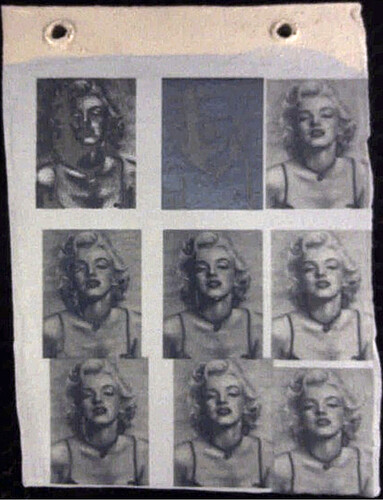My wife (a skilled potter with her own studio) has been working on laser firing ceramic glazes. (She’s currently working up a proprietary glaze formulation specifically for this use.)
Here’s some test firings she did with off the shelf commercial glazes and her own proprietary (non-laser specific) formulations:
First is a five panel sampling using (from left to right): Proprietary Raisin Cone 6, Proprietary Black Cone 6, Amaco Obsidian Cone 5/6, Proprietary Gold Cone 6, Mayco Stroke & Coat Football Cone 06/10
The substrate is .250" thick bisque fired cone 6 white stoneware.
The lines were run as manual cuts, .250" focal point, at the following speeds (from left to right), all at full-power, basic model: 100, 150, 200, 250, 300, 350, 400, 450 Glowspeed
All the lines were fully vitrified.
After firing:
After the un-fired glazee was scrubbed off:
She also gave “engraving” a try. The following were all done on the same substrate with Amaco Obsidian cone 6.
After firing:
After the non-fired glaze was scrubbed off and firing number notated:
All were fired in manual at 340 LPI, .250" focal point.
#1:“Convert to Dots”, Full Power, 300 Glowspeed
#2:“Map to Power”, Full Power, Min 50, 300 Glowspeed
#3:“Map to Power”, Full Power, Min 5, 300 Glowspeed
#4:“Map to Power”, Full Power, Min 5, 500 Glowspeed
#5:“Map to Power”, Full Power, Min 5, 600 Glowspeed
#6:“Map to Power”, Full Power, Min 5, 700 Glowspeed
#7:“Map to Power”, Full Power, Min 5, 800 Glowspeed
#8:“Map to Power”, Full Power, Min 5, 900 Glowspeed
#9:“Map to Power”, Full Power, Min 5, 1000 Glowspeed
You may not see in the pictures, but these photo “engraves” have depth. Well, a positive relief, anyway.
She is going to take them all and actually fire them to a cone 6 and see if they change at all. This is more to verify if they were actually fully vitrified by the laser. I’ll report back when she has the results.



